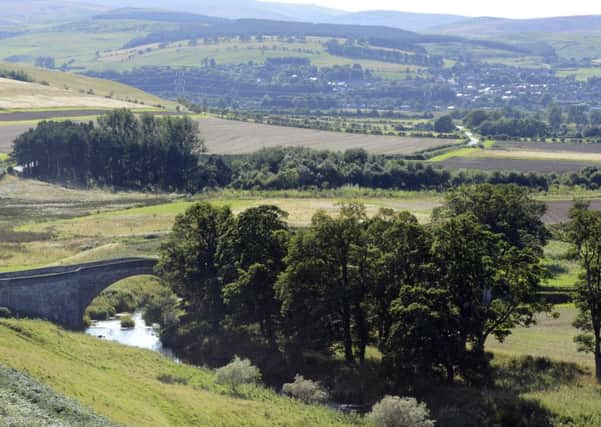Wooler, History Society


Captain Jim Evans, recently retired chairman of the Guild of Freemen of Berwick-upon-Tweed, imparted 1,000 years of history to an audience of 37 at September’s Glendale Local History Society meeting.
He revealed that Berwick is unique in many ways. It, together with Roxborough, became the first ‘Royal Borough’ and was once the wealthiest town in Scotland, with only London contributing more financially to its monarch.
Advertisement
Hide AdAdvertisement
Hide AdBerwick changed hands 27 times, finally becoming English. As King James VI crossed Berwick bridge into England he exclaimed that Berwick should be the centre of his domain, neither English nor Scottish.
In ancient days a Burgess was a privileged member of a community, enjoying freedom to trade as a merchant and possessing certain rights. In return they had responsibility for administering and supporting their community. They had been granted a plot of land from the King, to whom they paid rent.
Those living in the then very prosperous town of Berwick became property owners, living in grand houses. The King also appointed a Provost, to collect and pay the town’s taxes, and a mayor who represented the Guild.
Master tradesmen evolved, each having their own guild. Names became associated with trades, for example Baxter (baker), Fletcher (butcher) Smith (blacksmith) and Miller. Other names were connected with places of origin.
Advertisement
Hide AdAdvertisement
Hide AdIn the 13th century Berwick grew in size, seeing an influx of families from the continent, attracted by its wealth.
Skills and trades were passed onto sons, but few families survived more than three generations – fire or disease frequently causing their demise.
Eventually tradesmen’s guilds combined with Burgesses’ into one Guild, becoming synonymous as Freemen.
The commercial centre of a community was the market, usually indicated by a market cross. Berwick had two such crosses, which stood where the Town Hall is sited. The Town or Guild Hall was given to the Guild of Freemen centuries ago. Past uses have included a prison. Originally having one curfew bell, it now has eight bells, paid for by the Freemen, there being no bells in the parish church built in the Puritan days of Cromwell’s rule.
Advertisement
Hide AdAdvertisement
Hide AdCurrently, there are 600 Freemen, with women admitted in 2009. Originally only the eldest son was eligible, but by the 17th century all sons were admitted, widows too.
The Guild of Berwick-upon-Tweed formed a trust in 1926 and is governed by trustees and a committee elected annually. Roles, rules and privileges have evolved over the centuries, with Charters and Acts defining their governance.
Today, it supports charities, provides housing, and pursues ancient traditions and ceremonies. Captain Evans demonstrated its official robes and showed documents and books, proving Berwick-upon-Tweed has a very intricate history, incorporating that of the Freemen’s Guild.
The society’s next meeting is on Wednesday, October 12, at 7.30pm, at the Cheviot Centre, Wooler. The Romantic North: Picturesque Landscape before Photography will be presented by Peter Regan.